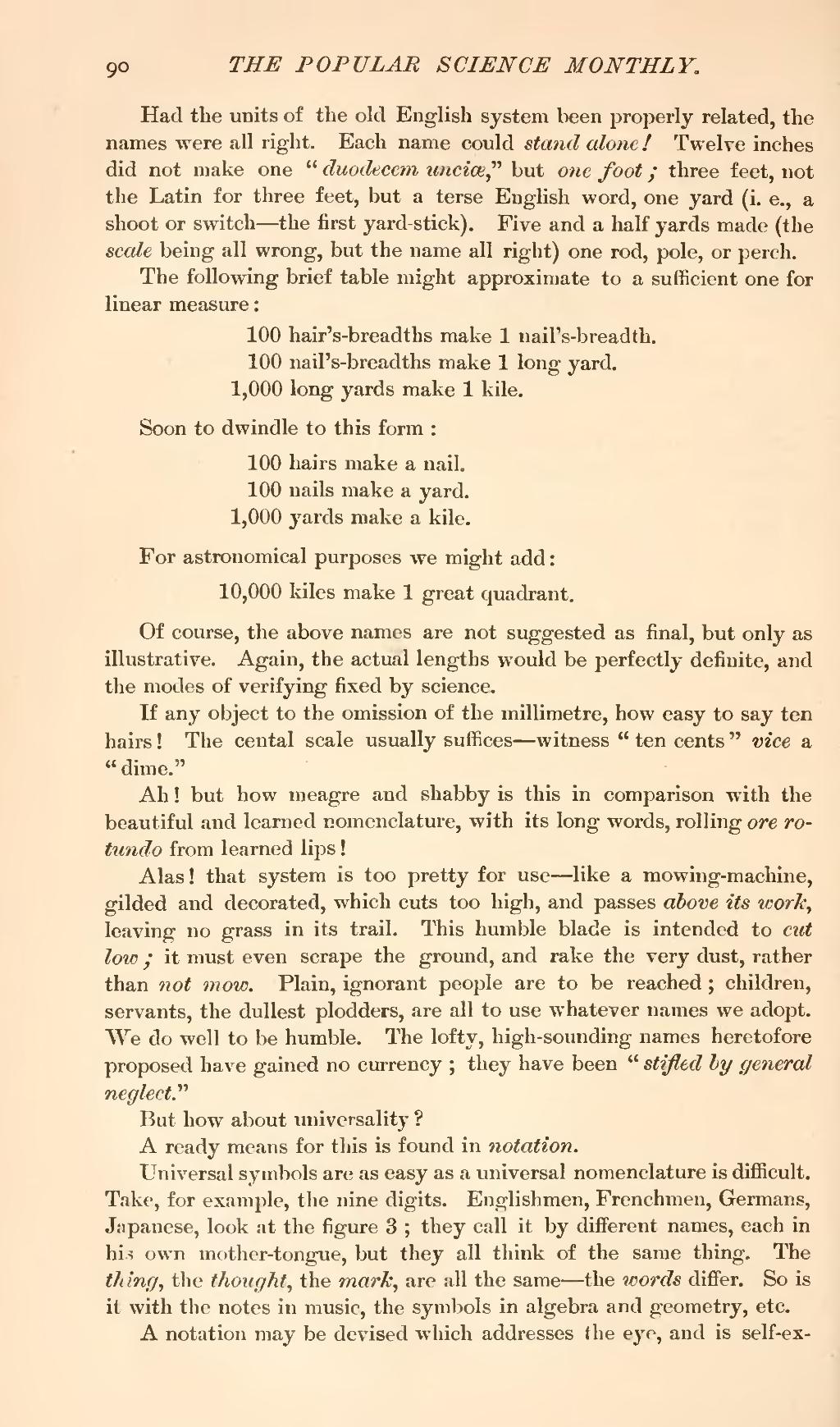Had the units of the old English system been properly related, the names were all right. Each name could stand alone! Twelve inches did not make one "duodecem unciæ" but one foot; three feet, not the Latin for three feet, but a terse English word, one yard (i. e., a shoot or switch—the first yard-stick). Five and a half yards made (the scale being all wrong, but the name all right) one rod, pole, or perch.
The following brief table might approximate to a sufficient one for linear measure:
100 hair's-breadths make 1 nail's-breadth.
100 nail's-breadths make 1 long yard.
1,000 long yards make 1 kile.
Soon to dwindle to this form:
100 hairs make a nail.
100 nails make a yard.
1,000 yards make a kile.
For astronomical purposes we might add:
10,000 kiles make 1 great quadrant.
Of course, the above names are not suggested as final, but only as illustrative. Again, the actual lengths would be perfectly definite, and the modes of verifying fixed by science.
If any object to the omission of the millimetre, how easy to say ten hairs! The cental scale usually suffices—witness "ten cents" vice a "dime."
Ah! but how meagre and shabby is this in comparison with the beautiful and learned nomenclature, with its long words, rolling ore rotundo from learned lips!
Alas! that system is too pretty for use—like a mowing-machine, gilded and decorated, which cuts too high, and passes above its work, leaving no grass in its trail. This humble blade is intended to cut low; it must even scrape the ground, and rake the very dust, rather than not mow. Plain, ignorant people are to be reached; children, servants, the dullest plodders, are all to use whatever names we adopt. We do well to be humble. The lofty, high-sounding names heretofore proposed have gained no currency; they have been "stifled by general neglect."
But how about universality?
A ready means for this is found in notation.
Universal symbols are as easy as a universal nomenclature is difficult. Take, for example, the nine digits. Englishmen, Frenchmen, Germans, Japanese, look at the figure 3; they call it by different names, each in his own mother-tongue, but they all think of the same thing. The thing, the thought, the mark, are all the same—the words differ. So is it with the notes in music, the symbols in algebra and geometry, etc.
A notation may be devised which addresses the eye, and is self-ex-

